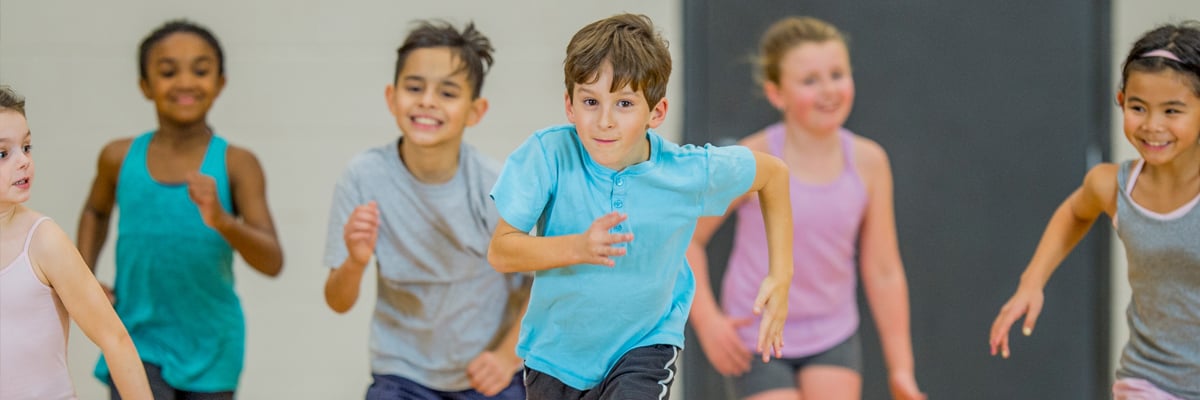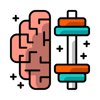The Link Between Physical Education and Wellbeing: What Does the Science Say?
 It’s been proven time and time again that exercise is not only crucial to our physical health but also our mental well-being, making it an essential part of everyday life. This is why we need physical education in our schools. But unfortunately, people often underestimate the importance of P.E., and most students stop taking it once they reach their teens. So today, we’re going to be arguing why physical education is actually a necessity and discussing how it promotes positive well-being (as backed up by science)! If you’re a sports skeptic, maybe it’s worth giving our article a read to see if we can change your mind. Without further ado, let’s dive in:
It’s been proven time and time again that exercise is not only crucial to our physical health but also our mental well-being, making it an essential part of everyday life. This is why we need physical education in our schools. But unfortunately, people often underestimate the importance of P.E., and most students stop taking it once they reach their teens. So today, we’re going to be arguing why physical education is actually a necessity and discussing how it promotes positive well-being (as backed up by science)! If you’re a sports skeptic, maybe it’s worth giving our article a read to see if we can change your mind. Without further ado, let’s dive in:
Developing Motor Skills
 Starting off, physical education is a necessity for well-being because it teaches us how to exercise in the first place. If we’re unable to exercise, we’re unable to reap all its well-being benefits (which we’ll talk about more in a second). Physical education at school helps to develop children’s motor skills, so they’re able to complete activities like running, skipping, and swimming with greater ease. Over time, lessons can also improve kids’ muscle strength, hand-eye coordination, cardiovascular endurance, agility, balance, reaction speed, and more. With all these skills, children can get the very most out of exercising - plus, their lives become easier overall!
Starting off, physical education is a necessity for well-being because it teaches us how to exercise in the first place. If we’re unable to exercise, we’re unable to reap all its well-being benefits (which we’ll talk about more in a second). Physical education at school helps to develop children’s motor skills, so they’re able to complete activities like running, skipping, and swimming with greater ease. Over time, lessons can also improve kids’ muscle strength, hand-eye coordination, cardiovascular endurance, agility, balance, reaction speed, and more. With all these skills, children can get the very most out of exercising - plus, their lives become easier overall!
Supports Mental Health
 One of the top benefits of physical education is that it’s a brilliant tonic for mental health. Innumerable studies have proven what a positive impact exercise has on mental well-being. But how exactly does it work on a biological level? Well, scientists have found that exercise prompts the brain to release chemicals like serotonin and endorphins, which are some of our ‘feel good’ hormones, providing us with a mood boost almost instantaneously. In a similar vein, physical activity can also help to reduce the stress hormones in our bodies, adrenaline, and cortisol. So, if your class is ever feeling particularly anxious or dispirited, a P.E. lesson could actually be the perfect remedy for them.
One of the top benefits of physical education is that it’s a brilliant tonic for mental health. Innumerable studies have proven what a positive impact exercise has on mental well-being. But how exactly does it work on a biological level? Well, scientists have found that exercise prompts the brain to release chemicals like serotonin and endorphins, which are some of our ‘feel good’ hormones, providing us with a mood boost almost instantaneously. In a similar vein, physical activity can also help to reduce the stress hormones in our bodies, adrenaline, and cortisol. So, if your class is ever feeling particularly anxious or dispirited, a P.E. lesson could actually be the perfect remedy for them. Helps Social Development
Believe it or not, physical education and social development go hand in hand! Most P.E. lessons involve children working together in some form; whether that’s splitting off into teams, pairing up for an activity, or getting everybody in the class involved in a game. For group sports to work, communication is key. Kids learn to talk to each other kindly and effectively; how to encourage their peers and how to console them. These are all vital components of social development and therefore well-being.Helps Emotional Development
 Following on from our previous point about social development, physical education, and emotional development are also inextricably linked. Exercise has always been a brilliant tool for managing emotions, which children can learn through P.E. lessons. For instance, if a student is frustrated about something, the teacher can coach them through their emotions and help them to channel it into exercise, like a fast sprint or a powerful football kick. This helps the children to become better at emotional regulation and improves their overall well-being.
Following on from our previous point about social development, physical education, and emotional development are also inextricably linked. Exercise has always been a brilliant tool for managing emotions, which children can learn through P.E. lessons. For instance, if a student is frustrated about something, the teacher can coach them through their emotions and help them to channel it into exercise, like a fast sprint or a powerful football kick. This helps the children to become better at emotional regulation and improves their overall well-being. Promotes Mental Clarity
People with poor mental health often struggle with brain fog and fatigue, making it hard for them to think straight or motivate themselves to complete tasks. Exercise can help to dispel any grogginess and promote mental clarity by getting fresh, oxygenated blood pumping through your brain. This is why - contrary to popular belief - doing exercise can also help to improve our energy levels (so long as it isn’t too intensive). Physical education is, therefore, a fantastic way to rejuvenate a class and boost their overall well-being, plus their ability to concentrate in lessons!
Keeps Kids Fit
 It cannot be understated just how important fitness is for our overall health. Among other things, exercise is a fantastic preventative measure against future health conditions. Moreover, it helps to strengthen your bones, muscles, heart, and lungs - making it easier to complete everyday tasks. According to the CDC and NHS, kids between the ages of 6 and 17 need to be physically active for 1 hour a day and engage in intensive exercise 3 days a week. Physical education lessons are a brilliant way of guaranteeing that kids are exercising at least 2 days a week, making them a real necessity.
It cannot be understated just how important fitness is for our overall health. Among other things, exercise is a fantastic preventative measure against future health conditions. Moreover, it helps to strengthen your bones, muscles, heart, and lungs - making it easier to complete everyday tasks. According to the CDC and NHS, kids between the ages of 6 and 17 need to be physically active for 1 hour a day and engage in intensive exercise 3 days a week. Physical education lessons are a brilliant way of guaranteeing that kids are exercising at least 2 days a week, making them a real necessity.
Key to Mental Development
 Did you know that exercise is conducive to learning? Whenever we’re physically active, it causes fresh blood and oxygen to pump around our brains. This stimulates the release of chemicals that are responsible for the health of our brain cells and for growing new blood vessels in the brain. Furthermore, research by the University of British Columbia found that vigorous exercise helps to boost the size of our hippocampus, the part of the brain used for learning and memory retention. So, you can see why physical education is so important when it comes to children’s mental development!
Did you know that exercise is conducive to learning? Whenever we’re physically active, it causes fresh blood and oxygen to pump around our brains. This stimulates the release of chemicals that are responsible for the health of our brain cells and for growing new blood vessels in the brain. Furthermore, research by the University of British Columbia found that vigorous exercise helps to boost the size of our hippocampus, the part of the brain used for learning and memory retention. So, you can see why physical education is so important when it comes to children’s mental development!
Less Time Sitting
More and more evidence is emerging to say that sitting for too long is incredibly detrimental to people’s physical well-being. The Mayo Clinic states that sitting for extended periods of time is linked to many serious health conditions, including higher blood pressure, increased risk of cardiovascular disease and cancer, and diabetes. Students spend around 5 hours a day in lessons, which equates to a lot of sitting. Physical education can help to break up these long periods of time with activity, helping to mitigate the issues that too much sitting might cause.These are some of the key reasons why physical education is so crucial to our well-being. Not only does it play a major role in children’s mental, social, and emotional development, but it can also hugely improve their mental well-being and physical health.

